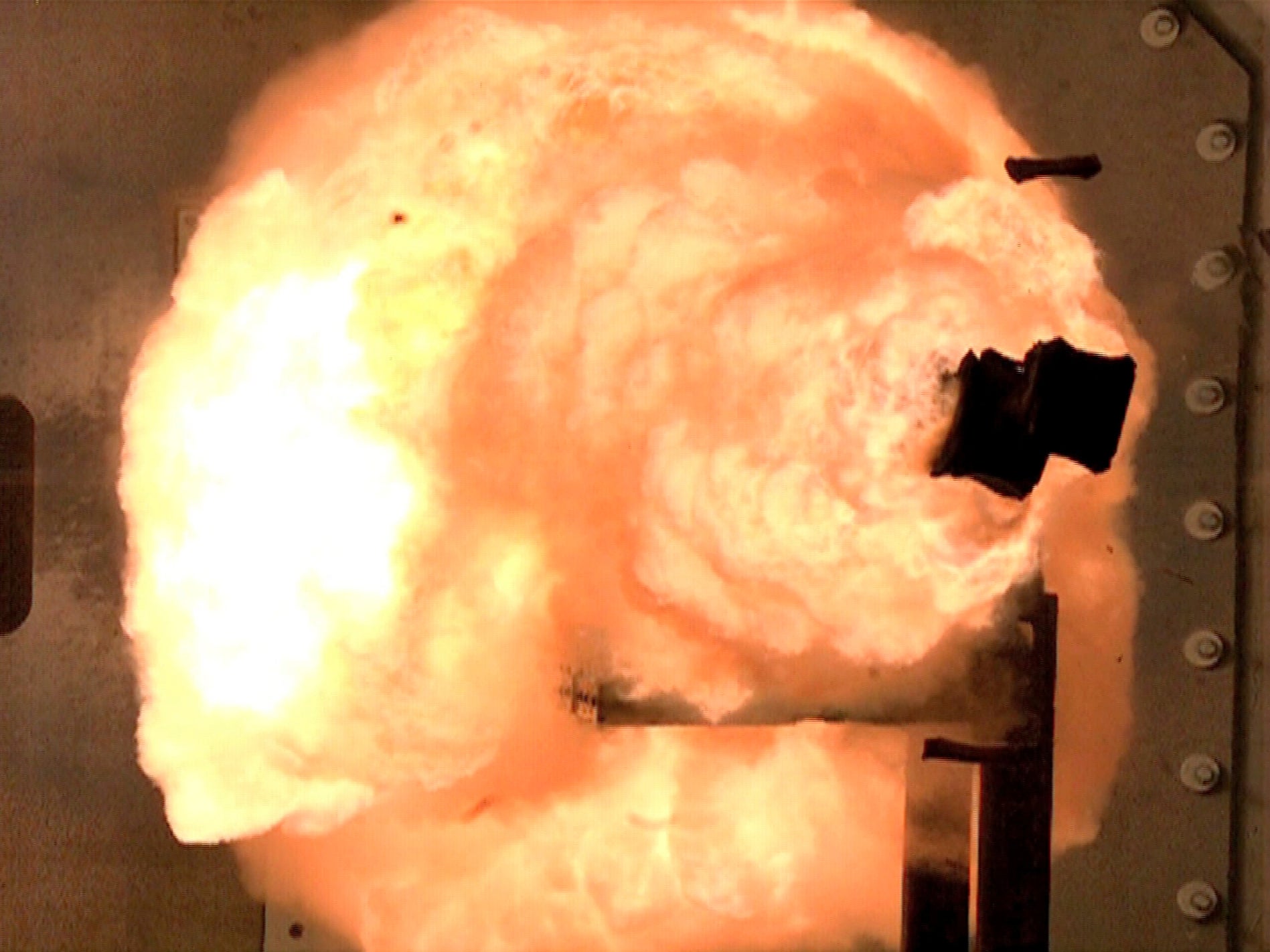Navy ditches futuristic railgun, eyes hypersonic missiles
The U.S. Navy has pulled the plug on research on a futuristic weapon that fires projectiles at up to seven times the speed of sound using electricity

Your support helps us to tell the story
From reproductive rights to climate change to Big Tech, The Independent is on the ground when the story is developing. Whether it's investigating the financials of Elon Musk's pro-Trump PAC or producing our latest documentary, 'The A Word', which shines a light on the American women fighting for reproductive rights, we know how important it is to parse out the facts from the messaging.
At such a critical moment in US history, we need reporters on the ground. Your donation allows us to keep sending journalists to speak to both sides of the story.
The Independent is trusted by Americans across the entire political spectrum. And unlike many other quality news outlets, we choose not to lock Americans out of our reporting and analysis with paywalls. We believe quality journalism should be available to everyone, paid for by those who can afford it.
Your support makes all the difference.The U.S. Navy pulled the plug, for now, on a futuristic weapon that fires projectiles at up to seven times the speed of sound using electricity.
The Navy spent more than a decade developing the electromagnetic railgun and once considered putting them on the stealthy new Zumwalt-class destroyers built at Maine's Bath Iron Works.
But the Defense Department is turning its attention to hypersonic missiles to keep up with China and Russia, and the Navy cut funding for railgun research from its latest budget proposal.
“The railgun is, for the moment, dead,” said Matthew Caris, a defense analyst at Avascent Group, a consulting firm.
The removal of funding suggests the Navy saw both challenges in implementing the technology as well as shortcomings in the projectiles' range compared to hypersonic missiles, he said.
The Navy's decision to pause research at year's end frees up resources for hypersonic missiles, directed-energy systems like lasers and electronic warfare systems, said Lt. Courtney Callaghan, a Navy spokesperson.
Information gleaned during testing will be retained in the event the Office of Naval Research wants to pick up where it left off in the future, she said.
All told, the Navy spent about $500 million on research and development, according to Bryan Clark, an analyst at the Hudson Institute.
The technology was close to making the leap from science fiction to reality in the 21st century with the testing of prototypes.
The concept held the possibility of providing an effective weapon at pennies on the dollars compared to smart bombs and missiles.
That's because railguns use electricity instead of gunpowder, or jet or rocket engines, to accelerate a projectile at six or seven times the speed of sound. That creates enough kinetic energy to destroy targets.
But there were a number of problems. Those included the range of about 110 miles in testing. A Navy vessel could not employ the gun without putting itself within range of a barrage of enemy missiles. And its usefulness for missile defense was also limited by range and rate of fire, Clark said.
The idea dates back to the 1940s. But there have always been major hurdles because the parallel rails, or conductors, are subjected to massive electric current and magnetic forces that can cause damage after a few shots, said defense analyst Norman Friedman.
A big question was always whether the gun could stay together during continuous firing, Friedman said.
A normal gun can be fired about 600 times before the barrel has to be refurbished, but the barrel on the railgun prototype had to be replaced after about a dozen or two dozen shots were fired, Clark said.
A few years ago, the Navy was talking about putting the gun on the future USS Lyndon B. Johnson, the last of three stealthy destroyers. It's nearing completion and builder trials at Bath Iron Works.
The 600-foot-long (180-meter-long) warship uses marine turbines similar to those that propel the Boeing 777 to help produce up to 78 megawatts of electricity for use in propulsion, weapons and sensors.
That’s more than enough electricity for the railgun, and the ship has space following the cancellation of the advanced gun system, leaving the ship with no conventional cannon-based weapon.
Instead, the Navy is pursuing an offshoot of the railgun, a hypervelocity projectile, that can be fired from existing gun systems.